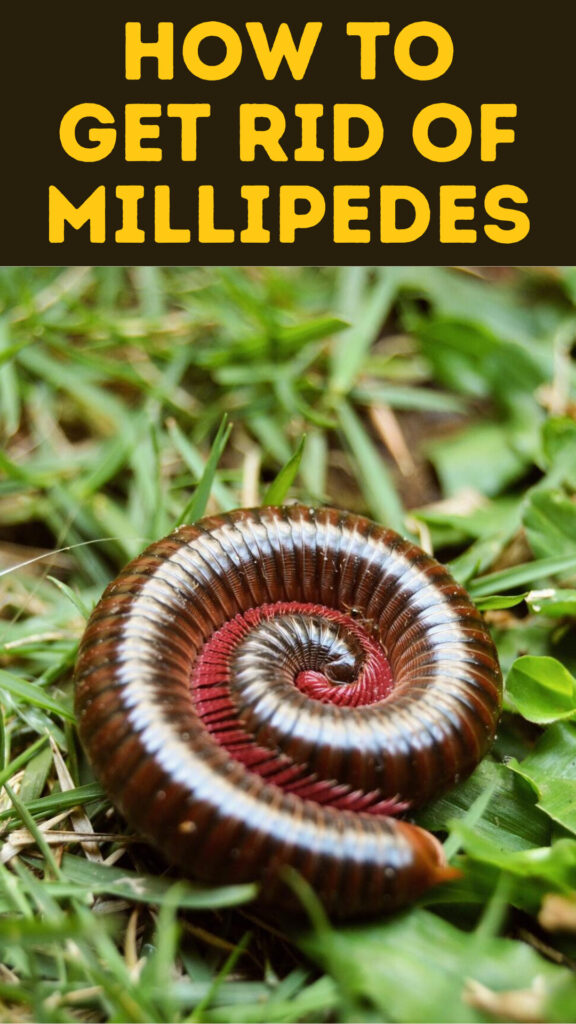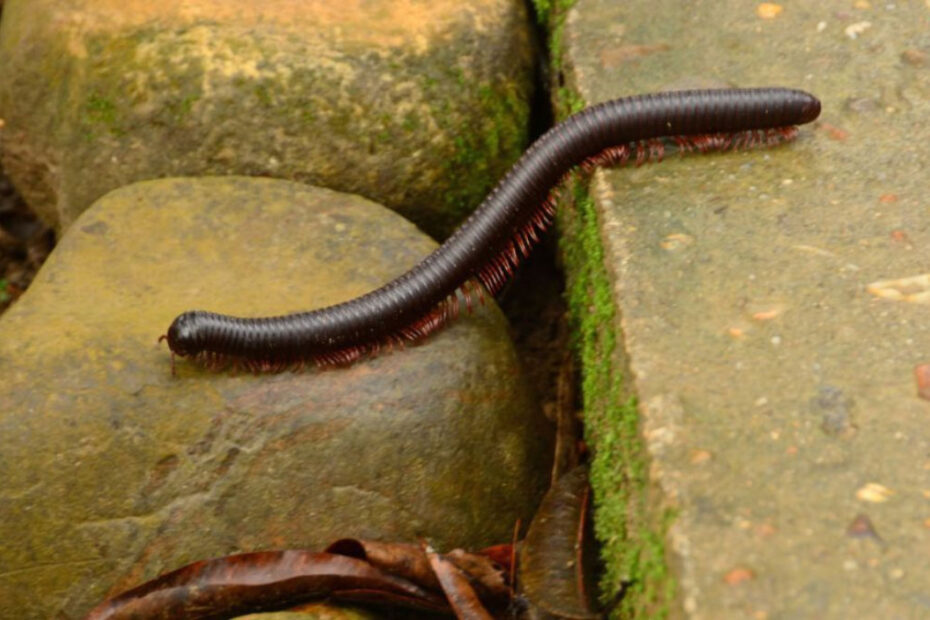Millipedes might seem harmless, but when they invade your home, they can become a nuisance. These multi-legged creatures thrive in damp environments and often find their way into basements, bathrooms, and other moist areas. If you’ve noticed an influx of these pests, it’s time to take action.
Understanding why millipedes are attracted to your home is the first step in getting rid of them. By addressing the root causes and implementing effective strategies, you can keep your living space millipede-free. Let’s explore practical steps to eliminate these unwelcome guests and prevent them from returning.
Key Takeaways
- Understand Millipedes’ Behavior: Recognizing why millipedes invade—due to moisture, food sources, and shelter—can help in creating effective prevention strategies.
- Seal Entry Points: Inspect your home for cracks and gaps and seal them using silicone-based sealant and weather stripping to block millipedes’ access.
- Control Moisture: Reduce humidity levels by fixing leaks, using dehumidifiers, and improving ventilation in damp areas like basements and bathrooms.
- Remove Organic Debris: Regularly clear leaves, grass clippings, compost piles, and maintain vegetation to reduce millipedes’ food and shelter sources.
- Natural Remedies: Use diatomaceous earth, essential oils, or boric acid as eco-friendly solutions to deter and eliminate millipedes.
- Consider Chemical Solutions: For severe infestations, use insecticides or hire professional pest control services for tailored, comprehensive treatments.

Understanding Millipedes
Millipedes often find their way into homes, creating a nuisance. Knowing what they are and why they invade can help in tackling the problem effectively.
What Are Millipedes?
Millipedes are small, elongated arthropods. They belong to the class Diplopoda and are characterized by having two pairs of legs per body segment.
Characteristics:
- Appearance: Millipedes have cylindrical bodies, often dark brown or black.
- Size: They range from 0.08 to 11 inches, depending on the species.
- Behavior: Millipedes are nocturnal, meaning they are more active at night.
Why Millipedes Invade Homes
Millipedes enter homes looking for favorable conditions. They thrive in humid, dark, and damp environments.
- Moisture: High humidity areas like basements and bathrooms attract millipedes.
- Food Sources: Millipedes feed on decaying plant material, fungi, and organic debris.
- Shelter: They seek shelter during extreme weather conditions, either too dry or too cold, making homes an ideal refuge.
Understanding these factors can help in identifying potential entry points and taking preventive measures to keep millipedes out of your living spaces.
Preventive Measures
Preventing millipede infestations involves taking proactive steps to remove the conditions that attract them. This approach encompasses several specific strategies that address potential entry points, moisture control, and habitat elimination.
Seal Cracks And Crevices
To prevent millipedes from entering your home, it’s essential to seal all potential entry points:
- Inspect Your Home: Examine the exterior of your home for cracks, crevices, and gaps around windows, doors, and foundations.
- Use Sealant: Apply a silicone-based sealant to fill in any identified gaps or cracks.
- Install Weather Stripping: Add weather stripping around doors and windows to create a more secure seal.
By sealing these entry points, you create a physical barrier that prevents millipedes from getting inside.
Eliminate Moisture Sources
Millipedes thrive in moist environments, making moisture control crucial:
- Fix Leaks: Repair any leaky pipes, faucets, or fixtures in your home.
- Use Dehumidifiers: Place dehumidifiers in damp areas like basements and bathrooms to reduce humidity levels.
- Improve Ventilation: Ensure proper ventilation in crawl spaces, attics, and basements to promote airflow and dryness.
By reducing humidity and eliminating water sources, you make your home less attractive to millipedes.
Clear Debris And Organic Material
Clearing organic material and debris reduces millipede habitats:
- Remove Leaf Litter: Regularly clear leaves, grass clippings, and compost piles from around your home’s foundation.
- Trim Vegetation: Keep vegetation such as shrubs and grass trimmed and away from the exterior walls of your house.
- Store Firewood Properly: If you store firewood, keep it off the ground and away from the house.
By removing these materials, you take away the millipedes’ food and shelter sources, further discouraging them from invading your home.
By implementing these preventive measures, you can effectively reduce the risk of a millipede infestation. Taking proactive steps ensures your home remains an inhospitable environment for these pests.
Natural Remedies
Natural remedies offer effective ways to manage millipede populations without using harsh chemicals. Leveraging common household items and eco-friendly solutions can provide long-term relief. Below are some natural methods to consider.
Diatomaceous Earth
Diatomaceous earth, a powder made from fossilized algae, acts as a natural insecticide.
Application:
- Sprinkle diatomaceous earth around entry points, including door frames and windowsills.
- Apply in damp areas like basements or bathrooms where millipedes are often found.
- Reapply after heavy rains or significant cleaning to maintain effectiveness.
The tiny sharp particles damage the exoskeletons of millipedes, leading to dehydration and death.
Essential Oils
Essential oils offer a fragrant and non-toxic approach to repelling millipedes.
Types and Uses:
- Tea Tree Oil: Apply diluted tea tree oil around baseboards, cracks, and crevices.
- Peppermint Oil: Mix with water in a spray bottle and treat areas where millipedes are seen.
- Lavender Oil: Besides repelling millipedes, lavender oil adds a pleasant scent to your environment.
Steps:
- Mix 10-15 drops of essential oil with water in a spray bottle.
- Spray around doorways, windowsills, and other potential entry points.
- Reapply weekly or after cleaning affected areas.
Boric Acid
Boric acid serves as another natural solution, disrupting the digestive system of millipedes.
Application:
- Spread a thin layer of boric acid powder in areas where millipedes are active.
- Target dark, moist environments such as under sinks, alongside basement walls, and near exterior foundations.
- Use gloves when handling boric acid to avoid skin irritation.
- Keep out of reach of pets and children as it can be harmful if ingested.
Exploring these natural remedies provides diverse options for managing millipedes without environmental or health risks. Merging multiple methods enhances effectiveness.
Chemical Solutions
Chemical solutions offer effective ways to manage millipede infestations. For severe problems, several professional-grade options are available to eliminate these pests quickly.
Insecticides
Insecticides can efficiently reduce millipede populations in and around your home. Here are common treatments:
- Residual Sprays: These contain chemicals like bifenthrin or cypermethrin and can be applied around entry points and damp areas. They provide long-lasting protection.
- Dust Formulations: Products with diatomaceous earth or silica aerogel can be applied in cracks and crevices. These substances damage the millipedes’ exoskeletons, leading to dehydration.
- Granular Insecticides: Spread these around the perimeter of your home and garden. They protect larger areas and target millipedes as they move.
Steps to use insecticides effectively:
- Identify Entry Points: Focus on areas like doors, windows, and foundation cracks.
- Apply Product: Use as directed on the label to ensure safety and efficacy.
- Reapply if Necessary: Follow the product’s instructions for reapplication intervals.
Professional Pest Control Services
Professional pest control services can provide specialized treatments. These experts offer tailored solutions:
- Assessment: Professionals identify infestation severity and entry points.
- Customized Treatment Plans: They use a combination of chemical and non-chemical methods, ensuring comprehensive coverage.
- Follow-Up Visits: To ensure the infestation is under control, pest control services include scheduled follow-ups.
Consider professional services if:
- Severe Infestation: Your millipede problem persists even though DIY efforts.
- Health Concerns: You prefer avoiding direct contact with chemicals.
Using chemical solutions, combined with preventive measures and natural remedies, can effectively control and eliminate millipede infestations.
Long-Term Management
Effective long-term management of millipede populations involves consistent efforts and strategic actions. This section guides you on maintaining a millipede-free home through regular inspections and proper landscaping practices.
Regular Inspections
Scheduled inspections help detect early signs of millipede activity and prevent larger infestations.
Inspection Details:
- Foundation Cracks: Look for and seal any cracks in your home’s foundation.
- Moisture Sources: Check for and fix leaky pipes, faucets, and other moisture sources.
- Entry Points: Identify gaps around doors, windows, and vents, and use appropriate sealants.
Steps to Inspect:
- Check Exterior Walls: Identify cracks and gaps where millipedes could enter.
- Inspect Basements and Crawl Spaces: Assess these damp areas for millipede activity.
- Monitor Humidity Levels: Use a hygrometer to ensure humidity levels stay low.
Landscaping Tips
Proper landscaping minimizes habitats and entry points for millipedes.
Key Landscaping Terms:
- Mulch: Organic or inorganic material spread around plants.
- Deciduous Trees: Trees that shed their leaves annually.
- Drainage: Method of directing water away from structures.
- Reduce Mulch Depth: Keep mulch layers thin to reduce moisture retention.
- Rake Leaves Regularly: Prevent decaying matter accumulation near your home.
- Install Proper Drainage: Ensure water flows away from your house’s foundation.
- Trim Vegetation: Maintain a gap between plants and your home’s exterior.
By following these steps, you can keep your living spaces free of millipedes in the long term. Regular inspections and effective landscaping practices are essential components of an integrated pest management plan.
Conclusion
By understanding what attracts millipedes to your home and implementing proactive measures, you can significantly reduce the risk of infestations. Sealing entry points, controlling moisture, and clearing organic debris are essential steps. Natural remedies like diatomaceous earth and essential oils offer chemical-free options for managing these pests.
For severe infestations, chemical solutions and professional pest control services provide effective management. Regular inspections and strategic landscaping further ensure long-term control. Combining these strategies will help you maintain a millipede-free environment and protect your home from future invasions.
Frequently Asked Questions
What attracts millipedes to my home?
Millipedes are attracted to homes with high humidity, decaying plant material, and dark, damp environments. They may seek shelter indoors during extreme weather conditions.
How can I prevent millipede infestations in my home?
To prevent millipede infestations, seal cracks and crevices around your home, control moisture by fixing leaks and improving ventilation, and clear organic material and debris from your property.
Are there natural remedies to manage millipede populations?
Yes, natural remedies include using diatomaceous earth, essential oils like tea tree and peppermint, and boric acid to repel and kill millipedes without harsh chemicals.
What are effective chemical solutions for severe millipede infestations?
Insecticides such as residual sprays, dust formulations, and granular insecticides can effectively reduce millipede populations when applied correctly. Professional pest control services can offer customized solutions.
How can I maintain a millipede-free environment long-term?
Regular inspections for signs of millipede activity, effective landscaping practices to minimize habitats, and integrating preventive measures and natural remedies into your pest management plan are essential for long-term control.
